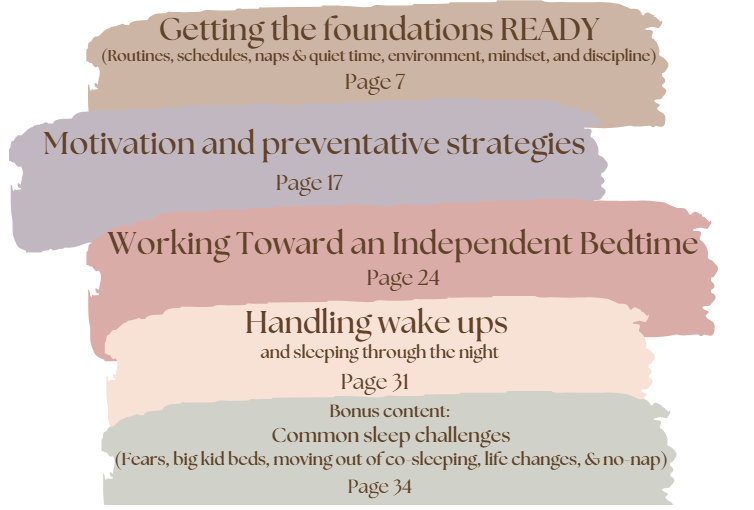Tackling Early Risings in Toddlers: Why They Happen and How to Handle Them
- Kelsey Flores

- Apr 30
- 4 min read
Early risings are a common struggle for many parents of toddlers. You know the drill—your little one is wide awake at the crack of dawn, ready to start the day, while you’re desperately trying to get just a few more minutes of sleep. While early risings can be incredibly frustrating, the good news is that they’re often manageable with a little understanding and the right tools. As a sleep consultant, I’ve seen firsthand that early morning wake-ups in toddlers are often linked to a few key factors, including too much daytime sleep, overtiredness, and light sensitivity. In this post, I’ll break down these causes and share tips on how to tackle the early morning wake-up battle—especially with the help of an “Okay to Wake” clock, like the Hatch, to guide your toddler’s understanding of when it’s time to sleep and when it’s time to wake up.
Why Do Toddlers Wake Up So Early?
Too Much Daytime Sleep: It may seem counterintuitive, but sometimes toddlers who nap too long during the day or nap too late can end up waking up early in the morning. A long or late nap can affect their ability to fall asleep and stay asleep at night, leaving them rested but restless come dawn. If your toddler naps for longer than 2-3 hours, or if the nap happens too late in the afternoon, it could lead to early morning wake-ups.
Overtiredness: Another common culprit is overtiredness. When toddlers don’t get enough daytime sleep, they can become overtired, which paradoxically can make it harder for them to stay asleep at night and lead to early wake-ups. Overtiredness affects their ability to enter deep sleep, and they may wake up earlier than they would if they were well-rested.
Light Sensitivity: Toddlers are often very sensitive to light, and as the days get longer (especially in the summer months), the sunlight can act as a natural alarm clock. If your toddler’s room isn’t dark enough, they may wake up at the first sign of daylight. Light is a powerful signal to the brain, and it can trick their internal clock into thinking it’s time to rise, even if it’s still early in the morning.
How to Handle Early Morning Wake-Ups
Adjust Daytime Sleep: If your toddler is napping too long or too late, try adjusting their nap schedule. A nap that’s too close to bedtime can push back their nighttime sleep, leading to early morning wake-ups. Aim to have your toddler’s nap end by around 2:00 PM, leaving enough time before bed to wind down. If they’re napping too long, try shortening their naps gradually. A nap of 1-2 hours is usually optimal for toddlers.
Ensure They’re Not Overtired: If your toddler isn’t getting enough sleep during the day, it could lead to overtiredness, making it harder for them to stay asleep in the morning. Pay attention to their wake windows—most toddlers need around 11-14 hours of sleep in 24 hours, including naps. If you notice your toddler is getting restless in the evenings or fighting bedtime, it might be a sign they need more daytime rest. Try moving bedtime earlier and adjusting nap times accordingly.
Darken the Room: If your toddler is waking up at sunrise, try using blackout curtains or blinds to keep their room as dark as possible. This can help prevent the morning light from disturbing their sleep and encourage them to stay asleep a bit longer. A dark room sends a clear signal that it’s still time to sleep, helping them stay in their slumber until it’s time to wake up.
Use an “Okay to Wake” Clock: One of the most effective tools for managing early morning wake-ups is an “Okay to Wake” clock. Unlike traditional clocks, these clocks use visual cues to teach toddlers when it’s time to wake up and when it’s time to sleep. The Hatch, for example, has customizable light colors that change when it’s time for your toddler to wake up. The clock can be set to show a green light when it’s time to get up, and a red light when it’s still sleep time. This provides your toddler with a visual reminder, something they can understand better than a regular clock.
The benefit of using an “Okay to Wake” clock is that it empowers your toddler to wait until the clock signals that it’s time to start the day. Over time, this can help your child develop a clearer sense of time and boundaries around sleep, making mornings more peaceful for everyone.
Need More Help with Toddler Sleep?
If you’re struggling with early morning wake-ups or other sleep challenges, you’re not alone. Every toddler’s sleep needs are unique, but with a little adjustment and the right strategies, you can help your little one get the rest they need—and get some much-needed sleep for yourself, too.
For more expert tips and step-by-step strategies, check out my Toddler Sleep Guide. It’s packed with practical advice on everything from early risings to bedtime resistance, and it’s designed to help you create a restful and predictable sleep routine for your toddler.






Comments